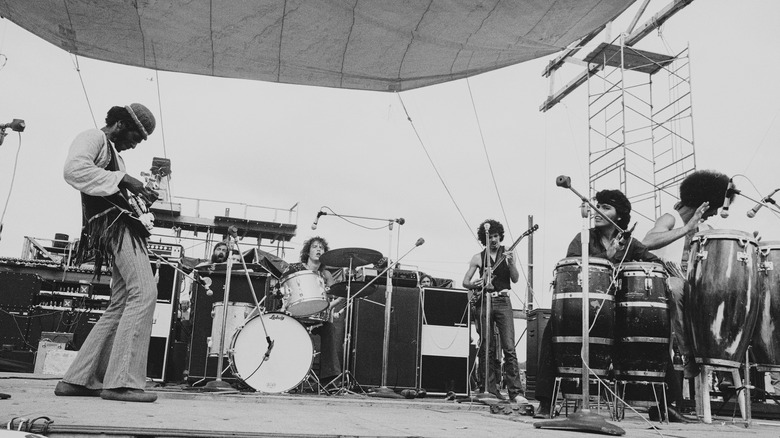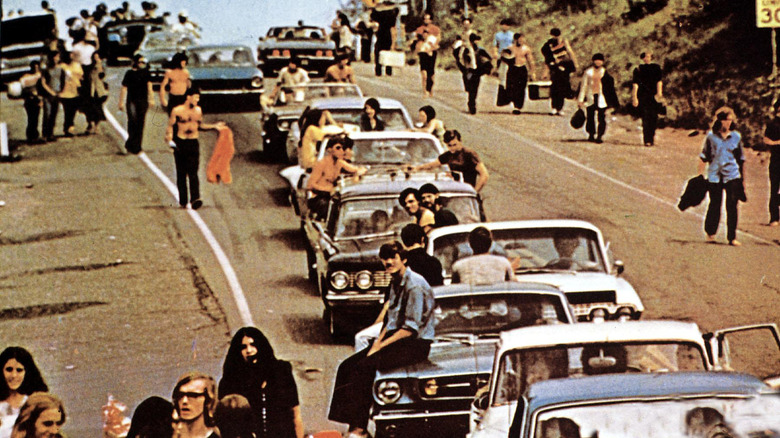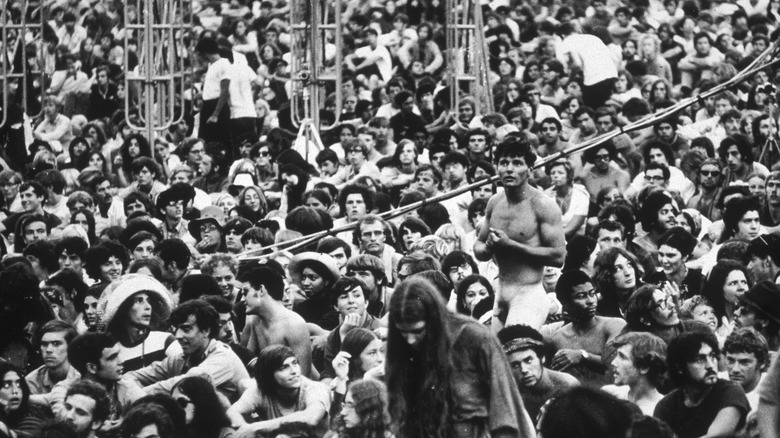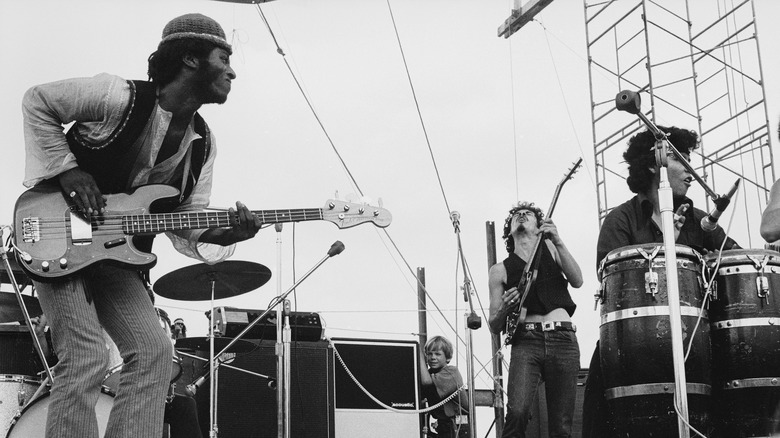Carlos Santana's Iconic Woodstock Performance Was Wilder Than You Realize
On the second day of Woodstock, the legendary music festival held in August 1969 on Max Yasgur's Farm in Bethel, New York, a young psychedelic rock band led by Carlos Santana took the stage. The grounds were "hot, humid, rainy, and muddy," but that didn't matter to festival goers tuning in to popular acts like Jimi Hendrix and The Who, as well as lesser-known acts like Santana that everyone would go on to recognize instantly (via History).
What the festival lacked in organization — Woodstock was a financial disaster for its organizers and eventually, security just started letting people in for free because there were half a million people at the gates — it made up for in magical musical moments. Some artists like The Who's lead singer Roger Daltrey seemed to show up for the music but didn't enjoy the psychedelic-infused atmosphere, accidentally tripping on LSD before his performance and feeling the stage lights sweep over him like a "nightmare come true" (You had to be careful about what you ate at Woodstock). But others like Santana performed even better than usual on psychedelics, embodying the "peace and music" spirit central to the festival.
An unknown act
Santana grew up playing violin and guitar on the streets of Tijuana, Mexico for spare change, according to the Bethel Woods Center for the Arts. As a teenager, he and his family moved to San Francisco, where he joined a blues band they aptly named the Santana Blues Band. Quickly shortened to simply Santana, the group played its first gig just about a year before Woodstock at the historic Bill Graham's Fillmore West in San Francisco (via Bethel Woods Center for the Arts). Shortly after, they were signed to Columbia Records.
Through a shared connection with their record label that connected Santana to legendary inner circuits of performers like Jefferson Airplane and the Grateful Dead, Santana secured a spot at Woodstock the next year. According to the Bethel Woods Center for the Arts, Santana's drummer Michael Shrieve said the crowd was so big when they approached that he thought the only way to get in was through a helicopter. "Getting up there and playing was, it was like standing at the ocean," he said. "This is just like the ocean, except it's people."
'In tune and on time'
Performing as a relatively unknown act to an audience of half a million people, Santana had a clean slate to make its impression on fans. And boy did they deliver. According to the Bethel Woods Center for the Arts, the band started out with an instrumental song called, "Waiting," after which the singer addressed screaming fans, thanking New York for being there before pausing a moment and asking, "We are in New York, yeah?"
It's no surprise the band wasn't sure where they were. According to The New York Times, then-22-year-old Santana had just taken a dose of mescaline from Jerry Garcia a couple of hours before taking the stage because the band was originally scheduled to perform much later in the night. Instead, at 2 p.m, Santana took the stage, repeating a mantra to himself that his mother had taught him to stay calm: "Just help me stay in tune and on time."
'Soul Sacrifice'
Already full-on tripping, Santana took the stage. In an interview with The New York Times, Santana describes his body language "like a surfer...wrestling [the guitar] to maintain and sustain balance." Per the Bethel Woods Center for the Arts, Santana imagined his guitar was a snake and he had to hold on to its neck to prevent it from attacking. But somehow, Santana rolled with the punches and ended up not only enjoying himself, but delivering a stellar guitar performance that would introduce many fans to his world-class talent. You can see the pure bliss the band shares with the audience when performing the aptly titled song, "Soul Sacrifice."
Per The New York Times, Santana said it was like, "seeing black and brown kids and poor white kids in Harlem River Drive on the hottest day in the summer, and somebody opens up a fire hydrant with cold water." It was a moment he holds onto to this day, he told The New York Times. "I witnessed, with my own eyes and my heart, that people can get along, with unity and harmony," he said.



